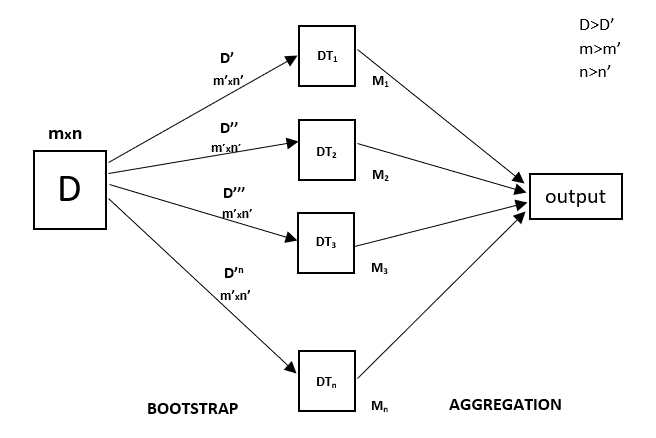Random Forest Regression in Python
Every decision tree has high variance, but when we combine all of them together in parallel then the resultant variance is low as each decision tree gets perfectly trained on that particular sample data and hence the output doesn’t depend on one decision tree but multiple decision trees. In the case of a classification problem, the final output is taken by using the majority voting classifier. In the case of a regression problem, the final output is the mean of all the outputs. This part is Aggregation.
A Random Forest is an ensemble technique capable of performing both regression and classification tasks with the use of multiple decision trees and a technique called Bootstrap and Aggregation, commonly known as bagging. The basic idea behind this is to combine multiple decision trees in determining the final output rather than relying on individual decision trees.
Random Forest has multiple decision trees as base learning models. We randomly perform row sampling and feature sampling from the dataset forming sample datasets for every model. This part is called Bootstrap.
We need to approach the Random Forest regression technique like any other machine learning technique
- Design a specific question or data and get the source to determine the required data.
- Make sure the data is in an accessible format else convert it to the required format.
- Specify all noticeable anomalies and missing data points that may be required to achieve the required data.
- Create a machine learning model
- Set the baseline model that you want to achieve
- Train the data machine learning model.
- Provide an insight into the model with
test data - Now compare the performance metrics of both the
test dataand thepredicted datafrom the model. - If it doesn’t satisfy your expectations, you can try improving your model accordingly or dating your data or use another data modeling technique.
- At this stage you interpret the data you have gained and report accordingly.
Comments
Post a Comment